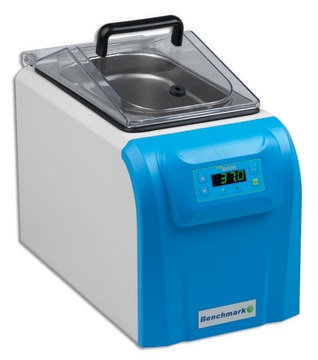920169
Tin (IV) oxide nanosheets
Synonim(y):
SnO2 nanosheet
Zaloguj sięWyświetlanie cen organizacyjnych i kontraktowych
About This Item
Polecane produkty
Zastosowanie
Tin(IV) oxide (SnO2) nanosheets are an attractive choice for creating stable and high-performance perovskite solar cells due to its wide bandgap, increased electron mobility, and high stability. SnO2 has a higher bandgap (at 3.8 eV), and the conduction band edge exhibits a 300 mV positive shift compared to TiO2, which results in lower photocatalytic activity and higher device stability. The charge mobility of SnO2 is almost two orders of magnitude higher than that of TiO2 and has a lower trap density than TiO2. Finally, SnO2 nanosheets materials have an advantage over typical TiO2 materials in flexible and low-temperature applications.
This page may contain text that has been machine translated.
Hasło ostrzegawcze
Danger
Zwroty wskazujące rodzaj zagrożenia
Zwroty wskazujące środki ostrożności
Klasyfikacja zagrożeń
Acute Tox. 3 Dermal - Acute Tox. 3 Inhalation - Acute Tox. 3 Oral - Eye Dam. 1 - Flam. Liq. 2 - Skin Corr. 1B - STOT SE 1
Organy docelowe
Eyes,Central nervous system
Kod klasy składowania
3 - Flammable liquids
Klasa zagrożenia wodnego (WGK)
WGK 2
Temperatura zapłonu (°F)
49.5 °F
Temperatura zapłonu (°C)
9.7 °C
Certyfikaty analizy (CoA)
Poszukaj Certyfikaty analizy (CoA), wpisując numer partii/serii produktów. Numery serii i partii można znaleźć na etykiecie produktu po słowach „seria” lub „partia”.
Masz już ten produkt?
Dokumenty związane z niedawno zakupionymi produktami zostały zamieszczone w Bibliotece dokumentów.
Takumi Kinoshita et al.
Nature communications, 6, 8834-8834 (2015-11-06)
The extension of the light absorption of photovoltaics into the near-infrared region is important to increase the energy conversion efficiency. Although the progress of the lead halide perovskite solar cells is remarkable, and high conversion efficiency of >20% has been
Mesoporous SnO2 nanoparticle films as electrontransporting material in perovskite solar cells
Li Y, et al.
Royal Society of Chemistry Advances, 5, 28424-28424 (2015)
Low-temperature SnO2-based electron selective contact for efficient and stable perovskite solar cells.
Song J, et al.
Journal of Material Chemistry A, 3, 10837-10844 (2015)
Nasz zespół naukowców ma doświadczenie we wszystkich obszarach badań, w tym w naukach przyrodniczych, materiałoznawstwie, syntezie chemicznej, chromatografii, analityce i wielu innych dziedzinach.
Skontaktuj się z zespołem ds. pomocy technicznej







